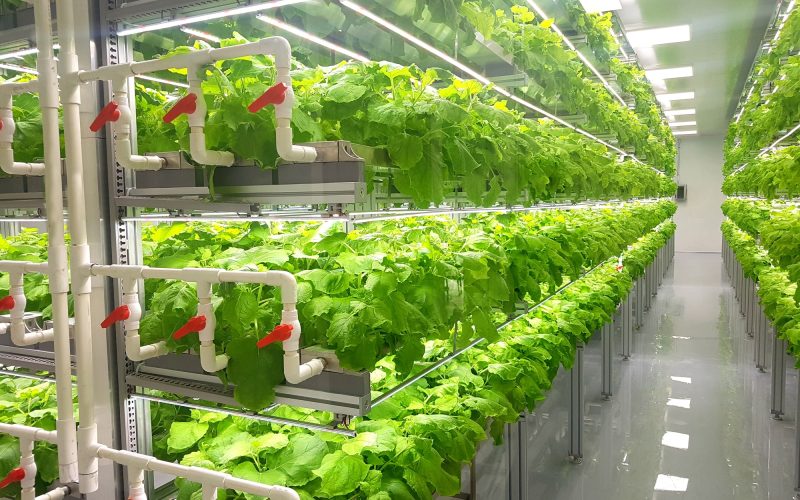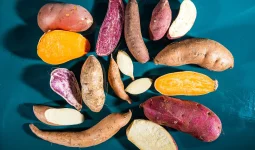Welcome to the enchanting world of indoor greenhouses! If you’ve ever dreamed of growing plants and creating your own little oasis inside your home, an indoor greenhouse is the perfect solution.
In this section, we’ll introduce you to the concept of indoor greenhouses and explore the incredible benefits they offer.
Introduction to Indoor Greenhouses
An indoor greenhouse, also known as an indoor garden or an interior greenhouse, is a controlled environment designed to nurture plants and provide them with optimal growing conditions within the confines of your home.
It allows you to cultivate a wide variety of plants, regardless of the outdoor climate or limited space.
Indoor greenhouses come in various sizes and styles, ranging from small tabletop units to larger freestanding structures.
They are typically equipped with transparent walls, such as glass or polycarbonate panels, which allow sunlight to penetrate while trapping heat inside.
This creates a warm and humid environment conducive to plant growth.
Benefits of Having an Indoor Greenhouse
Owning an indoor greenhouse brings with it a multitude of benefits that go beyond the sheer joy of nurturing plants.
Let’s explore some of the remarkable advantages:
- Year-round gardening: With an indoor greenhouse, you can indulge in gardening and plant care regardless of the season. No more waiting for the warmer months to arrive – you can enjoy the beauty of nature and the satisfaction of growing your own plants year-round.
- Extended growing season: Indoor greenhouses provide an extended growing season by protecting your plants from harsh weather conditions, such as frost, extreme heat, or heavy rains. This means you can start your seeds earlier and continue harvesting fresh produce even when it’s cold outside.
- Greater plant variety: Indoor greenhouses open up a world of possibilities when it comes to plant selection. You can grow diverse flowers, herbs, vegetables, and even tropical plants that may not thrive in your local climate. The ability to grow exotic plants adds an exciting element to your indoor garden.
- Improved air quality: Plants are natural air purifiers, absorbing carbon dioxide and releasing oxygen. Having an indoor greenhouse helps improve the air quality in your home by increasing oxygen levels and reducing pollutants. Breathing in fresh, clean air can positively impact your overall well-being.
- Stress relief and relaxation: Creating and tending to an indoor greenhouse can be a therapeutic and relaxing experience. It provides an escape from the hustle and bustle of everyday life, allowing you to unwind and connect with nature. The presence of greenery has been shown to reduce stress levels and promote a sense of calm.
By embracing the magic of indoor greenhouses, you can transform your living space into a flourishing haven of plant life.
The benefits are aesthetic and deeply rewarding, connecting you with the wonders of nature right in the comfort of your own home.
So, let your imagination bloom and embark on this delightful journey of indoor gardening!
Getting Started with an Indoor Greenhouse
If you’re excited about the idea of having your own indoor greenhouse, getting started is easier than you might think.
This section will explore two important aspects of setting up your indoor greenhouse: choosing the right location and types of indoor greenhouses.
Choosing the Right Location
When selecting the location for your indoor greenhouse, there are a few key factors to consider.
First and foremost, light availability is crucial. Look for a spot that receives ample natural light throughout the day.
South-facing windows are often ideal, as they provide the most sunlight.
If natural light is limited in your home, you can supplement it with artificial grow lights.
These lights mimic the spectrum of natural sunlight and can be adjusted to meet the needs of different plants.
Temperature is another important consideration. Most plants thrive in temperatures between 60°F and 75°F (15°C to 24°C).
Avoid placing your indoor greenhouse in areas that experience extreme temperature fluctuations or drafts.
Additionally, ensure that the location you choose allows for proper air circulation to prevent stagnant air and the buildup of humidity.
Types of Indoor Greenhouses
There are several types of indoor greenhouses to choose from, depending on your available space and personal preferences.
Here are a few common options:
- Grow Tents: These portable and versatile structures consist of a metal frame covered with a reflective material. Grow tents are available in various sizes and are often used for small-scale indoor gardening.
- Terrariums: Terrariums are enclosed glass containers that create a mini indoor ecosystem. They are perfect for showcasing small plants and creating a visually appealing display.
- Shelves or Racks: Utilizing shelves or racks is a great way to optimize vertical space. You can place potted plants on multiple levels and incorporate grow lights for optimal growth.
- Mini Greenhouses: Mini greenhouses are compact structures that can be placed on a tabletop or countertop. They provide a controlled environment for plants while taking up minimal space.
Remember, the type of indoor greenhouse you choose will depend on your specific needs and available space.
Consider factors such as the number and size of plants you want to grow and the overall aesthetic you desire for your indoor greenhouse.
For more information on different types of greenhouses, you can refer to our article on what is an indoor greenhouse called.
By choosing the perfect location and the right type of indoor greenhouse, you’ll be well on your way to creating a thriving oasis of greenery right in your own home.
Setting Up Your Indoor Greenhouse
Now that you’re ready to set up your own indoor greenhouse, there are a few key considerations to remember.
Paying attention to light and temperature, plant selection, and essential equipment and supplies will ensure a successful and thriving indoor gardening experience.
Light and Temperature Considerations
Proper lighting is essential for the growth and development of your indoor plants.
Most plants thrive under natural sunlight, so placing your indoor greenhouse in an area that receives ample sunlight throughout the day is important.
South-facing windows are ideal, as they tend to provide the brightest and most consistent light. You can supplement natural light with artificial grow lights if it is limited.
LED grow lights are a popular choice as they are energy-efficient and emit the specific light spectrum that plants need for photosynthesis.
Temperature is another crucial factor to monitor in your indoor greenhouse.
Most plants prefer temperatures between 65°F and 75°F (18°C – 24°C) during the day and slightly cooler temperatures at night.
Keep in mind that some plants may have specific temperature requirements, so it’s important to research the optimal temperature range for the plants you choose to grow.
Maintaining a consistent temperature is key, so consider using a thermometer to monitor the temperature inside your greenhouse.
Selecting the Right Plants
The success of your indoor greenhouse largely depends on selecting the right plants for your growing conditions.
Consider factors such as light availability, temperature requirements, and your personal preferences.
Some popular indoor plants that thrive in greenhouses include herbs like basil, thyme, rosemary and leafy greens such as lettuce and spinach.
You can also explore flowering plants like orchids and succulents.
Choose plants that align with your gardening goals and the conditions you can provide within your indoor greenhouse.
Essential Equipment and Supplies
Equipping your indoor greenhouse with the necessary tools and supplies is essential for a smooth gardening experience.
Here are some key items you’ll need:
- Plant containers: Choose containers that provide adequate drainage and are suitable for the size of your plants.
- Potting soil: Use a high-quality potting mix that is well-draining and suitable for the types of plants you’re growing.
- Watering can or hose: Ensure you have a convenient method for watering your plants, whether it’s a watering can or a hose with a gentle spray nozzle.
- Plant labels: Keep track of plant varieties using plant labels or markers.
- Pruning tools: Invest in a good pair of pruning shears or scissors for trimming and maintaining your plants.
- Watering and humidity monitoring tools: Consider using a moisture meter to gauge the moisture levels in the soil and a humidity monitor to ensure the humidity levels are suitable for your plants.
By paying attention to light and temperature, selecting suitable plants, and gathering the essential equipment and supplies, you’re well on your way to creating a thriving indoor greenhouse.
Remember to regularly monitor and adjust the conditions within your greenhouse to provide the best environment for your plants to flourish. Happy gardening!
Caring for Your Indoor Greenhouse
Now that you have set up your indoor greenhouse, it’s important to know how to care for it properly.
Caring for your indoor greenhouse involves ensuring proper watering and humidity control, pest and disease management, and pruning and maintenance.
Watering and Humidity Control
Maintaining the right level of moisture is crucial for the health of your indoor greenhouse plants.
Different plants have varying water requirements, so it’s important to understand the needs of each plant species you have chosen.
Overwatering can lead to root rot, while underwatering can cause plants to wilt and suffer.
To ensure proper watering, check the soil moisture regularly by inserting your finger about an inch into the soil.
If it feels dry, it’s time to water the plants. However, avoid letting the soil become waterlogged.
Consistency is key, so establish a watering schedule that suits the needs of your plants.
Humidity control is also essential in an indoor greenhouse. Some plants thrive in high humidity, while others prefer lower levels.
You can use a humidifier or place a tray of water near your plants to increase humidity.
Conversely, ensure proper ventilation by opening windows or using fans to reduce humidity.
Pest and Disease Management
Just like outdoor gardens, indoor greenhouses can be susceptible to pests and diseases.
Regular monitoring is crucial to catch any issues early on. Inspect your plants regularly for any signs of pests, such as aphids or spider mites.
If you notice any pests, immediately prevent them from spreading. Use organic pest control methods or consult a professional if the infestation worsens.
Diseases can also affect your plants in an indoor greenhouse. Be mindful of any signs of fungal or bacterial infections, such as yellowing leaves or black spots.
Proper ventilation, maintaining good sanitation practices, and avoiding overwatering can help prevent diseases.
If necessary, use appropriate fungicides or seek advice from a horticulturist.
Pruning and Maintenance
Regular pruning and maintenance are essential for keeping indoor greenhouse plants healthy and thriving.
Pruning helps control the size and shape of the plants, promotes airflow, and removes dead or diseased foliage.
Use clean and sharp pruning shears to make clean cuts, and always sanitize your tools to prevent the spread of diseases.
Maintenance tasks include removing fallen leaves, cleaning the greenhouse structure, and inspecting the overall health of your plants.
Regularly check for any signs of stress, nutrient deficiencies, or abnormalities.
Adjust lighting and temperature settings if necessary to create the ideal growing conditions.
Following these care guidelines will create a nurturing environment for your indoor greenhouse.
Remember to research the specific needs of your plant species to ensure they thrive.
With proper care, your indoor greenhouse will continue to provide you with the joy and satisfaction of cultivating your own green oasis.
Enjoying the Wonders of an Indoor Greenhouse
After setting up your indoor greenhouse and caring for your plants, it’s time to sit back, relax, and enjoy the wonders it brings into your life.
An indoor greenhouse offers numerous benefits beyond just growing plants.
Let’s explore some of the ways you can fully enjoy your indoor greenhouse.
Creating a Relaxing Space
Your indoor greenhouse can serve as a tranquil oasis, providing a peaceful and calming environment.
Your plants’ lush greenery and vibrant colors create a soothing ambiance that promotes relaxation and stress relief.
Consider adding comfortable seating, soft lighting, and serene decor to create a cozy nook where you can unwind and rejuvenate.
Spending time in your indoor greenhouse can be a form of therapy, allowing you to connect with nature even when the weather outside is less than ideal.
Whether you choose to read a book, meditate, or enjoy the beauty of your plants, this serene space is yours to enjoy.
Growing Your Own Food
One of the most rewarding aspects of owning an indoor greenhouse is the opportunity to grow your own food.
Imagine plucking fresh herbs, crisp salad greens, and juicy tomatoes right from your indoor garden.
Not only does this provide you with a sustainable and organic food source, but it also allows you to savor the flavors of freshly harvested produce.
Growing your own food in an indoor greenhouse gives you greater control over the quality and safety of what you consume.
You can avoid pesticides and other harmful chemicals often found in store-bought produce.
Plus, it’s a wonderful way to engage in a sustainable lifestyle and reduce your carbon footprint.
Enhancing Indoor Air Quality
Indoor air quality is a significant concern, especially in urban areas with high pollution levels.
Your indoor greenhouse plays a crucial role in improving the air quality within your home.
Plants naturally purify the air by absorbing carbon dioxide and releasing oxygen through the process of photosynthesis.
Certain plants, such as peace lilies and spider plants, are particularly effective at removing toxins and pollutants from the air, thus improving the overall indoor air quality.
This can positively impact your health and well-being, reducing the risk of respiratory issues and enhancing the overall comfort of your living space.
By creating a relaxing space, growing your food, and enhancing indoor air quality, your indoor greenhouse becomes a haven that nourishes your body and soul.
Take the time to fully embrace and enjoy the wonders that your indoor greenhouse brings into your life.
If you’re interested in learning more about greenhouses in general, check out our article on what is a greenhouse.








